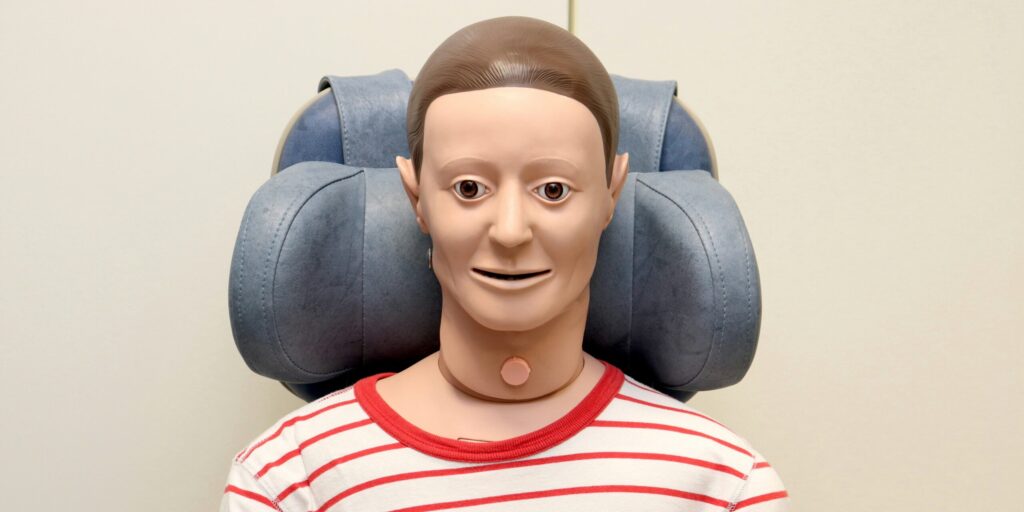Read time 4 minutes
When Life Gets Stiff (Literally)
What happens when you’re told you have an incurable disease? For most people, the word “incurable” feels like a full stop. But here is someone for whom it became a comma. It was just a pause before a new chapter began.
Most of us complain about stiff backs after a long day at work. But imagine if stiffness wasn’t just temporary, it was your everyday reality.
That’s what happened to Liam. He is a 38-year-old diagnosed with Stiff Person Syndrome (SPS). It is a rare and incurable neurological condition.
At first, the name itself made him laugh. “Stiff Person Syndrome? Sounds like a bad dance move!”
But behind the quirky name lies a serious condition that affects only about 1 in a million people worldwide.
This is Liam’s story, a blend of science, struggle, and surprising humour.
Chapter 1: The Strange Beginning
It started innocently…
I noticed my legs felt unusually rigid after climbing stairs. Soon, my back muscles would spasm so hard that I looked like a soldier standing at attention.
Doctors ran endless tests.
Finally, the verdict came: Stiff Person Syndrome. The neurologist explained that SPS is an autoimmune disorder. The body mistakenly attacks its own nervous system, causing painful spasms and stiffness.
There was no cure. Only symptom management. And my first reaction? “So basically, I’m a human robot now?”
Chapter 2: What Exactly Is SPS?
Here’s the science in simple words:
- SPS is linked to antibodies against GAD (glutamic acid decarboxylase). It is an enzyme needed to make GABA, a chemical that calms the nervous system.
- Without enough GABA, the body’s “relax” signals don’t work properly. Muscles stay tense, leading to stiffness and spasms.
- Triggers can include sudden noise, emotional stress, or even a gentle touch.
Fun fact most people don’t know:
SPS patients sometimes describe spasms so strong they can fracture bones. Yet, despite the severity, the condition is often misdiagnosed as anxiety or Parkinson’s disease.
Chapter 3: Finding Humor in Hardship
I quickly realized that if I didn’t laugh, I’d cry. So, I leaned into humor:
- I nicknamed my walking stick The Sword of Destiny.
- When my back locked up during a wedding dance, I told guests I was inventing a new style called The SPS Shuffle.
- I started a blog called “Life in Stiff Mode”, where I shared memes about hospital gowns, waiting rooms, and the irony of being “too stiff to relax.”
Even Science backs me up: Laughter reduces cortisol (the stress hormone) and boosts endorphins, which can actually ease pain.
Chapter 4: Lessons from my Journey
My story isn’t just about illness, it’s about life. Here are my biggest lessons:
- Acceptance is freedom. Accepting SPS didn’t mean giving up. It meant redirecting energy from denial to adaptation.
- Rituals matter. Every morning, I light incense and stretch gently. It’s less about flexibility and more about starting the day with intention.
- Community heals. Through online groups, I met others with SPS. Suddenly, I wasn’t alone in my stiffness.
- Curiosity helps. I experimented with diet, meditation, and even music therapy. Some worked, some didn’t but curiosity gave me control.
- Joy is medicine. I learned that joy isn’t optional, it’s essential. Even on bad days, I find something to laugh about.
Chapter 5: What Science Is Discovering
Here’s what’s I could find, new and fascinating about SPS research:
1) Immunotherapy:
Treatments like IVIG (intravenous immunoglobulin) and rituximab are showing promise in reducing symptoms.
2) Music therapy:
Studies suggest rhythm and melody can help retrain motor pathways.
3) Virtual reality rehab:
Patients are using VR to practice movements in safe, playful environments.
4) Mind-body connection:
Meditation and guided imagery are being studied as ways to calm the nervous system.
I tried guided imagery, imagining his stiff muscles as “overenthusiastic security guards” who needed to chill. Surprisingly, it worked.
Chapter 6: The Social Side of Illness
One of the hardest parts of SPS isn’t the stiffness, it’s the stigma. People often assume me as anxious, drunk, or exaggerating.
By sharing my story, I hope to change that. I want people to know that incurable doesn’t mean unlivable.
Conclusion: There is Life Beyond Stiffness
For me, SPS is not the end of his story, it’s just a different script.
- I laugh at the absurd.
- I find strength in small rituals.
- I build community through honesty.
- I discover joy in unexpected places.
My biggest lesson? Health is not just the absence of disease, it’s the presence of joy, connection, and purpose.
Key Takeaways for Readers
- Stiff Person Syndrome is rare but real. Don’t dismiss unusual stiffness as “just stress.”
- Humor is powerful medicine. It lightens even the heaviest days.
- Science and tradition can coexist. From IVIG to turmeric milk, both have roles.
- Community is healing. No one should walk this path alone.
- Joy is essential. Even in illness, life can be playful and meaningful.
Final Word
If you or someone you know is living with Stiff Person Syndrome, remember: the story isn’t over. It’s just being written differently. And sometimes, those different stories are the ones that inspire the world the most.


